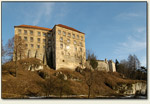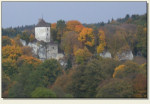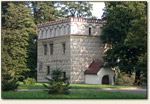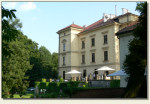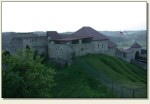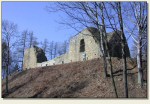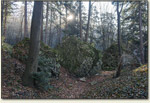Search
Alphabetical index
a palace in Wilanów
Babice
Bagieniec
Baranów Sandomierski
Barciany
Bardo
Barwałd Górny
Baszków
Bąkowa Góra
Besiekiery
Będzin
Białaczów
Białawoda
Biecz
Biedrzychowice
Bielsko-Biała
Bierutów
Bobolice (Lower Silesian province)
Bobolice (Silesia Province)
Bobrowniki
Bobrów
Bobrów Castle
Bochotnica
Bodzentyn
Bolczów Castle
Bolesławiec (Łódz Province)
Bolków
Bolmin
Borów Polski
Borysławice Zamkowe
Borzygniew
Bożków
Brok
Bronów
Brzeg
Bychawa
Byczyna
Bydlin
Bytów
Chełmo
Chęciny
Chlewiska
Chobienia
Chocianowiec
Chocianów
Chocz
Chojnik Castle
Chojnów
Chudów
Chwarszczany
Ciechanowice
Ciechanów
Ciepłowody
Cieszków
Cieszyn
Cisy Castle (of the Cis family)
Czarny Bór
Czchów
Czemierniki
Czerna
Czernina
Czersk
Częstochowa
Człuchów
Czoch Castle
Czorsztyn
Czyżów Szlachecki
Decjusz’s Villa
Dęblin
Dębno
Dobczyce
Dobra
Domanice
Dunajec Castle
Dzierżoniów
Dzietrzychowice
Dziewin
Frombork
Frydman
Giebułtów
Głogów
Głogówek
Gniew
Gniewoszów
Gola
Gola Dzierżoniowska
Golczewo
Golub-Dobrzyń
Gołuchów
Gorzanów
Gościszów
Góra
Górka Castle
Grodno Castle
Grodziec (Lower Silesia Province)
Grodziec (Silesian Province)
Grodziec Castle
Gryf Castle
Gryfów Śląski
Grzędy (Wojaczów)
Grzmiąca
Henry's Castle
Iłża
Janowice Wielkie
Janowiec
Jawor
Jelcz-Laskowice
Jelenia Góra
Jelenia Góra-Sobieszów
Jeżów (Wilczyska)
Jędrzychów
Kamieniec
Kamieniec Ząbkowicki
Kamienna Góra
Karpień Castle
Karpniki
Karpno (Lądek Zdrój)
Kazimierz Dolny
Kąty Wrocławskie
Kętrzyn
Kliczków
Kłaczyna
Kłodzko
Koło
Konradów Castle
Kozienice
Kozłówka
Koźmin Wielkopolski
Kożuchów
Kórnik
Kraków
Kraków
Kraków – Branice
Krasków
Krąg
Krobielowice
Krosno Odrzańskie
Krupe
Krzyżtopór Castle
Książ Castle
Książ Wielki
Kurozwęki
Kwidzyn
Lanckorona
Legnica
Lidzbark Warmiński
Lipa
Lipowiec Castle
Liw
Lubin
Lublin
Lubliniec
Lwówek Śląski
Łęczyca
Łodygowice
Łupki (Wleński Gródek)
Maciejowa (Jelenia Góra)
Malbork
Melsztyn
Melsztyn Castle
Mieroszów
Międzygórz
Międzylesie
Międzyrzecz
Mirów
Mirów Castle
Modła
Mokrsko Górne
Myślenice
Nawojowa
Nidzica
Nieborów
Niedzica
Niesytno Castle
Nowy Dwór Castle
Nowy Jasiniec
Nowy Sącz
Nowy Wiśnicz
Ogrodzieniec Castle
Ojców
Oleśnica
Oleśnica Mała
Olsztyn (Silesian Province)
Olsztyn (Warmia-Masuria Province)
Oława
Opole
Oporów
Ostróda
Ostrzeszów
Oświęcim
Otmuchów
Owiesno
Panków
Papowo Biskupie
Pastuchów
Pęzino
Pieskowa Skała
Pieszyce (Rościszów)
Piotrowice Świdnickie
Płakowice
Płonina
Podskale Castle
Podzamcze
Podzamcze Piekoszowskie
Proszówka
Przezmark
Przymiłowice Castle
Pszczyna
Rabsztyn
Raciążek
Radosno Castle
Radzyń Chełmiński
Rakowice Wielkie 1
Rakowice Wielkie 2
Reszel
Rogowiec Castle
Rogów Sobócki
Rudnica
Rudno
Rybnica
Rybnica Leśna
Rytro
Rząsiny
Sędziszowa
Siedlęcin
Siewierz
Skała
Słupice
Służejów
Small Wawel
Smoleń
Sobota
Sobótka - Górka
Sobótka (Ślęża Mountain)
Sokolec Castle
Sosnówka Dolna
Sośnicowice
Stadnicki’s Palace
Stara Kamienica
Stara Kraśnica
Stary Książ Castle
Stolec
Stoszowice
Stoszów
Sucha
Sucha Beskidzka
Szreńsk
Szydłowiec
Szydłów (Świętokrzyskie Province)
Szymbark (Lesser Poland Province)
Szymbark (Warmian-Masurian Province)
Świdnica
Świecie (Kuyavian-Pomeranian Province)
Świecie (Lower Silesia Province)
Świny
Tarnowiec
Tenczyn Castle
The Barwałd Castle
The Szczerba Castle
Toszek
Tropsztyn Castle
Trzciniec
Trzebień
Ujazd (Świętokrzyskie Province)
Uniejów
Uraz
Wałbrzych
Wałbrzych
Wałbrzych
Warmątowice Sienkiewiczowskie
Warszawa
Warta Bolesławiecka
Wawel Castle
Wąsosz
Wiadrów
Wielkie Trzcińsko
Wieruszyce
Witków
Witostowice
Wleń Castle
Wojanów
Wojcieszów
Wojnowice
Wolibórz (Garncarz Mountain)
Wolibórz (Jodłownik, Zamkowa Mountain)
Wołów
Wrocław (Armory)
Wrocław (Leśnica)
Wrocław (Ostrów Tumski)
Wrocław (University of Wrocław)
Wronin Castle
Wronów (Ronow) Castle
Wysoka
Wytrzyszczka
Zagórze Śląskie
Zapusta (Rajsko)
Ząbkowice Śląskie
Ziębice
Złoty Stok
Żary
Żelazno
Żmigród
a palace in Wilanów
Babice
Bagieniec
Baranów Sandomierski
Barciany
Bardo
Barwałd Górny
Baszków
Bąkowa Góra
Besiekiery
Będzin
Białaczów
Białawoda
Biecz
Biedrzychowice
Bielsko-Biała
Bierutów
Bobolice (Lower Silesian province)
Bobolice (Silesia Province)
Bobrowniki
Bobrów
Bobrów Castle
Bochotnica
Bodzentyn
Bolczów Castle
Bolesławiec (Łódz Province)
Bolków
Bolmin
Borów Polski
Borysławice Zamkowe
Borzygniew
Bożków
Brok
Bronów
Brzeg
Bychawa
Byczyna
Bydlin
Bytów
Chełmo
Chęciny
Chlewiska
Chobienia
Chocianowiec
Chocianów
Chocz
Chojnik Castle
Chojnów
Chudów
Chwarszczany
Ciechanowice
Ciechanów
Ciepłowody
Cieszków
Cieszyn
Cisy Castle (of the Cis family)
Czarny Bór
Czchów
Czemierniki
Czerna
Czernina
Czersk
Częstochowa
Człuchów
Czoch Castle
Czorsztyn
Czyżów Szlachecki
Decjusz’s Villa
Dęblin
Dębno
Dobczyce
Dobra
Domanice
Dunajec Castle
Dzierżoniów
Dzietrzychowice
Dziewin
Frombork
Frydman
Giebułtów
Głogów
Głogówek
Gniew
Gniewoszów
Gola
Gola Dzierżoniowska
Golczewo
Golub-Dobrzyń
Gołuchów
Gorzanów
Gościszów
Góra
Górka Castle
Grodno Castle
Grodziec (Lower Silesia Province)
Grodziec (Silesian Province)
Grodziec Castle
Gryf Castle
Gryfów Śląski
Grzędy (Wojaczów)
Grzmiąca
Henry's Castle
Iłża
Janowice Wielkie
Janowiec
Jawor
Jelcz-Laskowice
Jelenia Góra
Jelenia Góra-Sobieszów
Jeżów (Wilczyska)
Jędrzychów
Kamieniec
Kamieniec Ząbkowicki
Kamienna Góra
Karpień Castle
Karpniki
Karpno (Lądek Zdrój)
Kazimierz Dolny
Kąty Wrocławskie
Kętrzyn
Kliczków
Kłaczyna
Kłodzko
Koło
Konradów Castle
Kozienice
Kozłówka
Koźmin Wielkopolski
Kożuchów
Kórnik
Kraków
Kraków
Kraków – Branice
Krasków
Krąg
Krobielowice
Krosno Odrzańskie
Krupe
Krzyżtopór Castle
Książ Castle
Książ Wielki
Kurozwęki
Kwidzyn
Lanckorona
Legnica
Lidzbark Warmiński
Lipa
Lipowiec Castle
Liw
Lubin
Lublin
Lubliniec
Lwówek Śląski
Łęczyca
Łodygowice
Łupki (Wleński Gródek)
Maciejowa (Jelenia Góra)
Malbork
Melsztyn
Melsztyn Castle
Mieroszów
Międzygórz
Międzylesie
Międzyrzecz
Mirów
Mirów Castle
Modła
Mokrsko Górne
Myślenice
Nawojowa
Nidzica
Nieborów
Niedzica
Niesytno Castle
Nowy Dwór Castle
Nowy Jasiniec
Nowy Sącz
Nowy Wiśnicz
Ogrodzieniec Castle
Ojców
Oleśnica
Oleśnica Mała
Olsztyn (Silesian Province)
Olsztyn (Warmia-Masuria Province)
Oława
Opole
Oporów
Ostróda
Ostrzeszów
Oświęcim
Otmuchów
Owiesno
Panków
Papowo Biskupie
Pastuchów
Pęzino
Pieskowa Skała
Pieszyce (Rościszów)
Piotrowice Świdnickie
Płakowice
Płonina
Podskale Castle
Podzamcze
Podzamcze Piekoszowskie
Proszówka
Przezmark
Przymiłowice Castle
Pszczyna
Rabsztyn
Raciążek
Radosno Castle
Radzyń Chełmiński
Rakowice Wielkie 1
Rakowice Wielkie 2
Reszel
Rogowiec Castle
Rogów Sobócki
Rudnica
Rudno
Rybnica
Rybnica Leśna
Rytro
Rząsiny
Sędziszowa
Siedlęcin
Siewierz
Skała
Słupice
Służejów
Small Wawel
Smoleń
Sobota
Sobótka - Górka
Sobótka (Ślęża Mountain)
Sokolec Castle
Sosnówka Dolna
Sośnicowice
Stadnicki’s Palace
Stara Kamienica
Stara Kraśnica
Stary Książ Castle
Stolec
Stoszowice
Stoszów
Sucha
Sucha Beskidzka
Szreńsk
Szydłowiec
Szydłów (Świętokrzyskie Province)
Szymbark (Lesser Poland Province)
Szymbark (Warmian-Masurian Province)
Świdnica
Świecie (Kuyavian-Pomeranian Province)
Świecie (Lower Silesia Province)
Świny
Tarnowiec
Tenczyn Castle
The Barwałd Castle
The Szczerba Castle
Toszek
Tropsztyn Castle
Trzciniec
Trzebień
Ujazd (Świętokrzyskie Province)
Uniejów
Uraz
Wałbrzych
Wałbrzych
Wałbrzych
Warmątowice Sienkiewiczowskie
Warszawa
Warta Bolesławiecka
Wawel Castle
Wąsosz
Wiadrów
Wielkie Trzcińsko
Wieruszyce
Witków
Witostowice
Wleń Castle
Wojanów
Wojcieszów
Wojnowice
Wolibórz (Garncarz Mountain)
Wolibórz (Jodłownik, Zamkowa Mountain)
Wołów
Wrocław (Armory)
Wrocław (Leśnica)
Wrocław (Ostrów Tumski)
Wrocław (University of Wrocław)
Wronin Castle
Wronów (Ronow) Castle
Wysoka
Wytrzyszczka
Zagórze Śląskie
Zapusta (Rajsko)
Ząbkowice Śląskie
Ziębice
Złoty Stok
Żary
Żelazno
Żmigród
Kraków - Wawel Castle
Driving directions:
No one should have any problems with finding Cracow. After entering the town you need to head for the center. There are the signposts to the castle and the the Old Town Market Square, however they might be overlooked. Therefore, a reliable way of finding the castle is driving through the whole town down the main road (no. 4 or 7 depending on where you have arrived from) and reaching the Vistula. When you see the Wawel and begin to follow its direction, you need to pay close attention to traffic signs, as the streets in the center are often one-way and to reach the place visible 100 m in front of the car hood, many a time you have to cover a few kilometers around the Planty.
Historical outline:
The first attempts to fortify the Wawel Hill took already place in the Xth cent., when the Czech ruled the Lesser Poland. However, already before there could have been found the defensive settlements of the Vistulans. Certainly the first brick building was the keep (i.e. a defensive tower) from the first half of the XIIth cent., Then the construction of a Gothic castle was begun, whose founder was Boleslaw V the Chaste or Leszek II the Black. Since then until the XIXth cent. the castle was constantly extended and converted to meet defensive and esthetic requirements of the next centuries.
Through a few hundred years Cracow was the Polish capital, and the Wawel - the residence of the kings. In 1595 the castle was consumed by the fire caused by starting a fire during an alchemic experiment with the king Sigismund III Vasa being involved. This event and the fact that Cracow lies on the outskirts of Poland influenced the decision of the king - in 1609 he transferred the capital of Poland to Warsaw. The Wawel Cathedral, however, still remained the place of crowning the kings.
During the turmoils of wars, when Cracow fell into the hands of foreign armies, the Wawel was always becoming their residence. So it was in case of the Swedes, the Austrians and the Germans. Fortunately, the castle has never been destroyed thanks to which You can still saunter among the buildings, which witnessed the Piasts and the Jagiellonians.
Pictures:

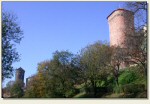

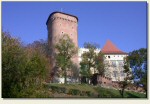
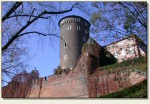

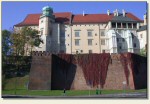
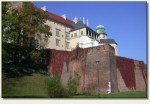
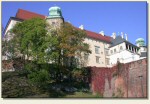
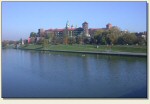
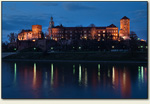
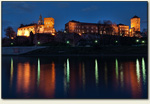

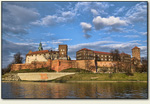
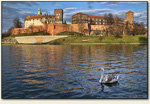
Nearest castles:
Polish castles - homepage
© 2009-2026 Bartosz Jastrzębski











